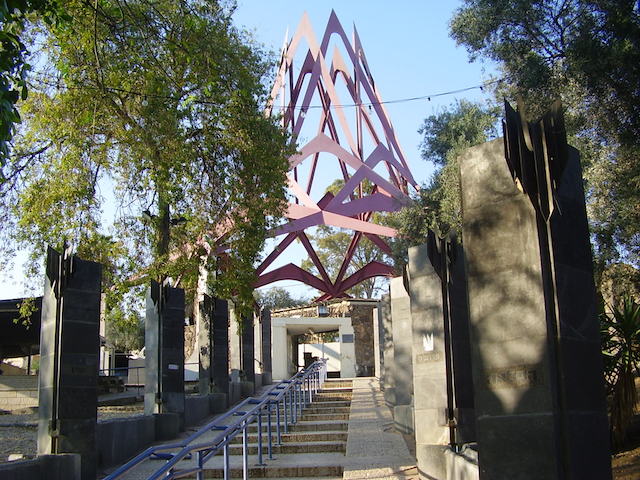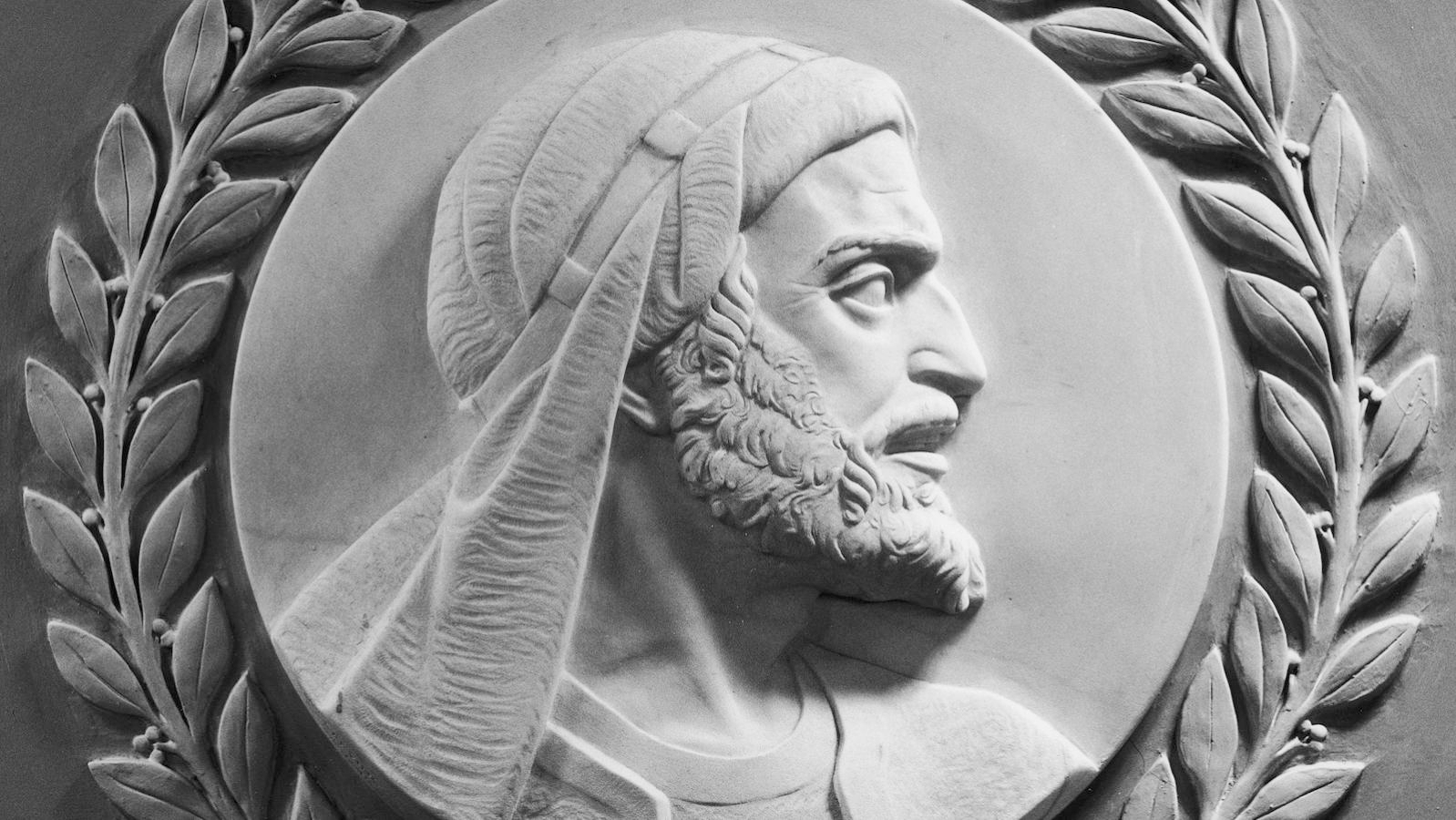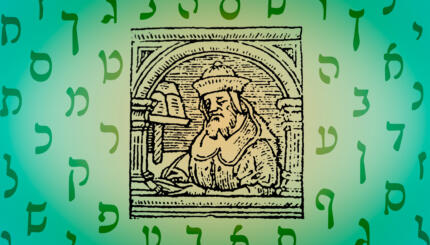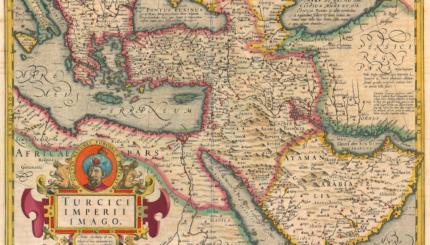Moses Maimonides, also known as the Rambam, was among the greatest Jewish scholars of all time. He made enduring contributions as a philosopher, legal codifier, physician, political adviser and local legal authority. Throughout his life, Maimonides deftly navigated parallel yet disparate worlds, serving both the Jewish and broader communities.
Maimonides was both a traditionalist and an innovator. Although he endured his share of controversy, he nevertheless came to occupy a singular, unquestioned position of reverence in the annals of Jewish history.
A Man of the World
Moshe ben Maimon was born in 1138 or late 1137. “Maimonides” is the Greek translation of “Moses, son of Maimon,” whereas the acronym RamBaM (רמבּ״ם) is its Hebrew equivalent. He grew up in Córdoba, in what is now southern Spain. Reared in a prosperous, educated family, the young Maimonides studied traditional Jewish texts like Mishnah, Talmud and Midrash under the tutelage of his father, Maimon. (An accomplished scholar in his own right, Maimon was the intellectual scion of legendary halachist [Jewish legal scholar] Isaac Alfasi.)
Maimonides also studied secular subjects like astronomy, medicine, mathematics and philosophy — a medieval “liberal arts” curriculum, so to speak. He was particularly captivated by the Greek philosophers Aristotle and Plotinus; their ideas persuaded him that reasoned inquiry was not only reconcilable with Judaism, but in fact its central discipline. Blessed with a prodigious memory and ravenous intellectual curiosity, Maimonides adopted an expansive view of wisdom. He had little patience for those who cared more about the prestige of scholars than the merits of their assertions and admonished his students: “You should listen to the truth, whoever may have said it.” (Commentary on the Mishnah, Tractate Neziqin)
With your help, My Jewish Learning can provide endless opportunities for learning, connection and discovery.
Maimonides lived under Islamic rule for his entire life, and he both benefited and suffered greatly because of it. Maimonides spent his formative years in a society in which tolerant Muslim leadership catalyzed vibrant cultural exchange with its Jewish and Christian minorities. Islamic scholarship in particular influenced him, especially later in his life. Unfortunately, when Maimonides was 10 years old, a fundamentalist Berber tribe called the Almohads entered Córdoba and presented Jewish residents with three choices: conversion, exile or death. The Maimoni family chose exile, leaving Córdoba and eventually emigrating to Morocco in about 1160, when Maimonides was in his early 20s. Many scholars believe Maimonides may have outwardly practiced Islam during this period, not out of belief but in order to protect himself, and that he continued to practice Judaism secretly. In 1165, the Maimoni family set sail for Palestine. After a brief yet formative visit to the land of Israel, then under Crusader rule, they finally settled in Egypt in 1166 — first in Alexandria, and eventually in Fustat (part of present-day Cairo). Maimonides lived there until his death in 1204.

Mishneh Torah and Guide of the Perplexed
Despite his demanding schedule as a full-time physician, Maimonides wrote prolifically, composing philosophical works, ethical and legal response letters, medical treatises and, in his 20s, a commentary on the entire Mishnah. His most enduring masterworks are the Mishneh Torah and the Guide of the Perplexed. Although he wrote them at different times and for different audiences, modern scholars understand the Mishneh Torah and Guide to be highly interdependent. They project a unified and reason-based vision of the purpose of Jewish life.
Mishneh Torah (written 1168-1178)
Maimonides composed the Mishneh Torah (literally, a “repetition” or “second” Torah) over a 10-year period, continuing to edit it until his death. Comprising 14 books and nearly 1,000 chapters, it was the first ever comprehensive code of halakha (Jewish law). In writing the MT, Maimonides drew from earlier source, such as the Mishnah, Tosefta, Midrash and Talmud, with an encyclopedic memory and considerable attention to both intertextuality and literary aesthetics. His admiration for these works notwithstanding, he designed the MT to be so exhaustive and accurate that it would make all but the Torah itself obsolete. In his introduction, he instructs, “One should read the written Torah and then read [the MT]. Then he will know the oral Torah in its entirety, without needing to read any other text beside.”
In order to make the Mishneh Torah accessible to the entire Jewish world, Maimonides organized it topically and composed it in clear, concise Hebrew. In a radical departure from tradition, Maimonides omitted from the MT both the names of earlier scholars and most of their opinions, preserving only those rulings he deemed correct. Critics attacked him for this decision, spawning an even greater literature that grows even to this day. Among his fiercest critics was Abraham ben David, the Ravad, (c. 1125-1198) a great Provençal Talmudist who criticized Maimonides for omitting his sources, among other things. Nonetheless, the Mishneh Torah inspired important scholars such as Rabbi Jacob ben Asher (c. 1269 – 1343) and Rabbi Joseph Caro (c. 1488 – 1575), two of the most important later codifiers, changing the landscape of Jewish thought forever.
Guide of the Perplexed (written 1185-1190)
While he envisioned a broad audience for the Mishneh Torah, Maimonides intended the Guide of the Perplexed primarily for students accomplished in both Jewish studies and philosophy. Concerned that the Torah’s fanciful stories and anthropomorphic depictions of God might lead such students to doubt the compatibility of scripture and reason (hence their perplexity), Maimonides sought to demonstrate that the two could in fact coexist.
Unlike the MT, which is written in clear, accessible Hebrew, the Guide is written in a more difficult, less commonly understood Judeo-Arabic — the language of Jews living in Muslim lands at the time. In contrast to the Mishneh Torah, which is highly organized, the Guide, by Maimonides’ own admission, lacks any cogent order. Topics “… are scattered and entangled with other subjects…for my purpose is that the truths be glimpsed and then again be concealed, so as not to oppose that divine purpose..which has concealed from the vulgar among the people those truths especially requisite for [God’s] apprehension” (From the introduction to the Guide, as it appears in the 1963 translation by Shlomo Pines). Maimonides also seeded the Guide with inconsistencies, sometimes stating one thing but intending another. He believed that truly capable students would discern the “truth” in the end. His authorial circumlocutions were intended to safeguard particularly powerful and dangerous knowledge about God, creation, and the afterlife.
Theological Secrets and Controversies
Although he denied there was anything incompatible about Greek philosophy and Jewish teachings, Maimonides may nevertheless have secretly believed things that were anathema to normative Judaism. Scholars debate the particulars fiercely, though; we will likely never know all of his true views with certainty. We do, however, know the central points of contention.
In his Commentary on the Mishnah, Maimonides outlined 13 principles of Jewish belief, itself a controversial undertaking in predominantly non-creedal Judaism. (Many Jews sing a poetic adaptation of these 13 principles called Yigdal at the end of Shabbat prayer services each week.) Maimonides’ third principle is that God has no body. Although a universal premise today, it was not necessarily so in 12th-century Judaism. In fact, some medieval mystics even wrote treatises detailing the measurements of God’s body.
Maimonides taught that biblical descriptions of God are allegorical, intended to help humans better understand lofty matters. For instance, the Torah describes God’s finger (Exodus 31.18), hand (Exodus 9.3) and feet (Exodus 24.10). According to Maimonides, these descriptions are “…adapted to the mental capacity of the majority of humans, who recognize only physical bodies. The Torah speaks in the language of humanity. All these phrases are allegorical” (Mishneh Torah, Foundational Laws of the Torah, 1.9). Maimonides recognized that language is inadequate to describe a God who is beyond ordinary human cognition. Therefore, he famously proposed, in Guide of the Perplexed, describing God by negation: ‘God is not a physical body’; ‘God is not composed of distinct parts’, and the like.

Another main point of controversy is Maimonides’ account of creation. Normative Judaism understands the creation story in the first chapter of Genesis as creatio ex nihilo (creation out of nothing). Aristotelian philosophy, however, posits that the universe is eternal, and thus was never “created” as such. Maimonides claimed to follow rabbinic tradition on this matter, but scholars disagree about what he really believed.
Finally, Maimonides’ opinions about the afterlife (See Mishneh Torah, Laws of Teshuvah, ch. 8) drew both admiration and scorn. He taught that in olam ha-ba (lit., ‘the world to come’) the souls of the righteous unite in perfect contemplation of God. Some critics accused him of rejecting the eventual, individual salvation of the righteous known as t’khiat ha-meitim (resurrection of the dead). One of Maimonides’ most outspoken detractors during his lifetime was Samuel ben Eli, the head of the Gaonic Academy in Baghdad. So problematic was the afterlife controversy for Maimonides that he eventually (c. 1190) wrote Treatise on Resurrection, to indicate that he did, in fact believe in the resurrection of the dead. Maimonides died in 1204 and was buried in Tiberias, in the north of Israel, in accordance with his wishes. An epitaph on his tombstone, which many people continue to visit, compares him favorably to his biblical namesake: “From Moses to Moses there never arose another like Moses.”
Recommended Reading about Maimonides
Halbertal, Moshe, trans. Joel A. Linsider. Maimonides: Life and Thought. Princeton, NJ: Princeton UP, 2014.
Kraemer, Joel L. Maimonides: The Life and World of One of Civilization’s Greatest Minds. New York: Doubleday, 2008.
Maimonides, Moses ( Isadore Twersky, ed.) A Maimonides Reader. New York: Behrman House, 1972.
Stroumsa, Sarah. Maimonides in His World: Portrait of a Mediterranean Thinker. Princeton, NJ: Princeton UP, 2009.
Midrash
Pronounced: MIDD-rash, Origin: Hebrew, the process of interpretation by which the rabbis filled in “gaps” found in the Torah.
Shabbat
Pronounced: shuh-BAHT or shah-BAHT, Origin: Hebrew, the Sabbath, from sundown Friday to sundown Saturday.
Torah
Pronunced: TORE-uh, Origin: Hebrew, the Five Books of Moses.



